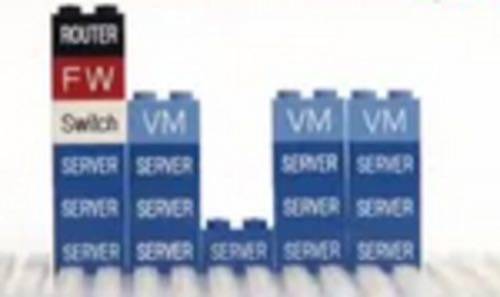VMworld starts in the morning and all eyes will be on what gets announced and how virtualization is extending its reach into the realm of cloud computing.

We sometimes find that during big events there is such a blur of jargon that it can be helpful to do a bit of homework for a grasp on how companies view the actual technologies and the ways they relate.
In that context we went to YouTube and explored how three companies view the relationship between cloud computing and virtualization. We graded each on its explanation.
Cisco
Cisco Systems Glenn Dasmalchi does a decent job of explaining Cisco’s view about the relationship between cloud computing and virtualization.
In Cisco’s view, cloud computing and virtualization are separate concepts but do relate. Cisco views cloud computing as a broad range of IT services that are delivered on demand with the ability to scale up and down, depending on the need.
He says Cisco divides virtualization into three categories: network virtualization, storage virtualization and virtualization as it relates to computing.
Dasmalchi does not fully explain how Cisco views the relationship between cloud computing and virtualization. Instead, he seems to dart around the issue of the private cloud and how a virtualized infrastructure provides an opportunity to move data in and between data centers. He does point out that a networking opportunity unfolds as data passes between different points. In a virtualized network, the end points are no longer static. Providing the right level of performance and security plays to Cisco’s strengths.
Cisco gets a a B- for its explanation. Dasmalchi dances around the concept of the private cloud without actually saying what it is. But you can see his argument strengthen when he relates virtualization directly to networking, Cisco’s obvious core strength.
Citrix Systems
CitrixCTO Simon Crosby crisply explains the company’s view on virtualization in private and public cloud environments.
Citrix desktop virtualization services represent its core strength. It acquired XenSource three years ago which put the company into the infrastructure as a service market. XenServer is sold on top of Microsoft HyperV. Crosby uses the video to explain how virtualization aligns the business and users to get access to IT it resources in a pooled environment.
He explains that in a public cloud environment, Citrix markets the Xen platform as an open-source infrastructure. Xen is designed for large-scale multi-tenant environments.
We give Citrix an A-. Crosby is well-spoken and clearly distinguishes between his views of a public and a private cloud. We take a few points off for the explanation of its infrastructure play and use of terms that have a fair dose of jargon mixed in. But, generally, it is pretty clear how Citrix views the relationship between cloud computing and virtualization.
BlueLock
BlueLock uses legos to explain its view on the relationship between cloud computing and virtualization. It’s a concise explanation that demonstrates how much the stack is changing.
In the explanation BlueLock CEO John Qualls shows the traditional approach to building an on-premise infrastructure. He then explains how virtualization enables its version of the cloud.
BlueLock is a service provider. It provides the capability to add resources to a virtualized environment. The video clearly shows how cloud computing fits by taking lego pieces that represent the different parts of the stack and how they can be moved, depending on the need.
BlueLock is the winner of the three. We give them an A for showing how the traditional stack is changing. They show how the cloud can be scaled up or down depending on the customer’s business needs.
In all, we think this coming year will see a far more clear picture of how cloud computing and virtualization relate. The bridge is being formed. Now it’s a question of who can tell the story most effectively. We hope more can emulate BlueLock. There’s nothing better than showing what you do. We can watch talking heads all day. The people may be smart but legos are far more fun and something we can all relate to.










